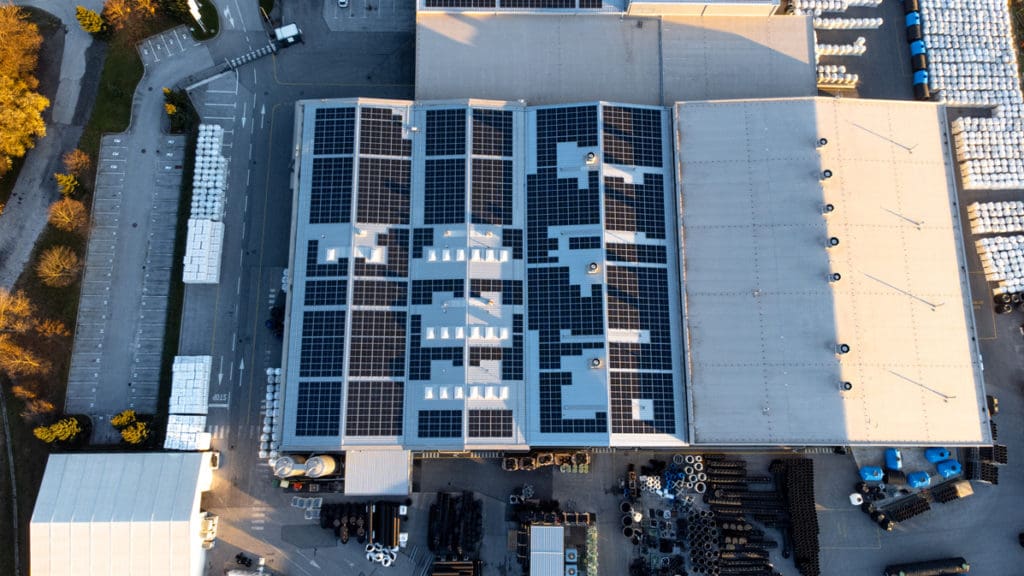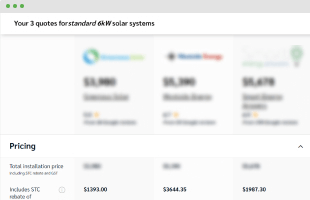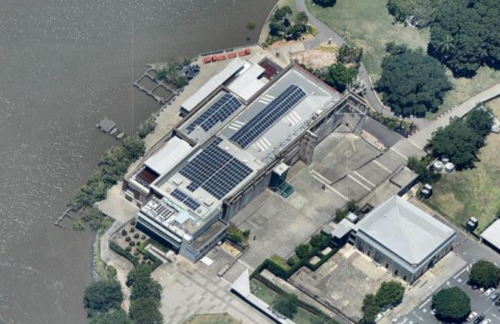100kW solar systems are among the most popular commercial solar system sizes in Australia, as this size is the cutoff point for up-front incentives through the federal government. This article provides an overview of most of the key points that businesses need to know if they are considering a 100kW solar system for their commercial premises.
100kW Solar System Costs
The cost of installing a solar system has fallen significantly in recent years thanks to a number of factors, including Australian government incentives for renewable energy, growing competition between solar panel installers and component manufacturers, and global manufacturing trends. Coupled with rising commercial electricity prices, solar systems in the 100kW range offer a compelling money-saving and investment option for a wide array of business types. Accordingly, the uptake of commercial solar power has increased significantly in Australia in the last several years – with 2023 looking set to be the country’s best year yet.
| 100kW | |
|---|---|
| Adelaide, SA | $93,580 |
| Brisbane, QLD | $90,280 |
| Canberra, ACT | $97,390 |
| Hobart, TAS | $78,100 |
| Melbourne, VIC | $84,140 |
| Sydney, NSW | $83,060 |
| Perth, WA | $96,010 |
| All | $88,940 |
As per the table, the average cost of a 100kW solar power system as of July 2023 is $87,780 including GST and the STC upfront rebate.
The graph below – from our Commercial Solar PV Price Index – shows average price trends for 100kW solar systems since Solar Choice started keeping track in May 2014. (The Index also incorporates pricing for 10kW, 30kW, 50kW and 70kW systems).

Historically we can see that the cost of a 100kW solar system has significantly dropped in the last decade.
Compare 100KW quotes from leading commercial installers
Energy yields for 100kW solar systems
There are many factors that influence the output of solar PV systems. These include the orientation and tilt angle of the solar panels, the presence or absence of shading, the average system operating temperature, and the quality of the system’s components. All of these factors are taken into consideration when a system is designed in order to arrive at a reasonable estimate as to what that system’s power output will be once it is operational.
The theoretical upper limit for the amount of power a flat-panel 100kW solar system (or any flat-panel system) can produce is determined first by the amount of incident sunlight on the area where it is located throughout the course of a day, month, season, or year. It goes without saying that different regions of the country receive different amounts of solar irradiation. As a very rough guide, a system in Australia will produce 4 kilowatt-hours (kWh) per kW of installed capacity per day, averaged throughout the year. This figure will of course be higher in sunnier locations and lower in less sunny spots (Brisbane sees more sunlight than Hobart, for example) and the season (power generation is higher in the summer thanks to the longer days). Solar Choice can calculate this exactly for your project using local BoM data and an analysis of the roof space you have available using Nearmaps software.
| 100kW Solar Panel System Output by Capital City | |
| Adelaide | 385 kWh per day |
| Brisbane | 400 kWh per day |
| Canberra | 385 kWh per day |
| Darwin | 440 kWh per day |
| Hobart | 310 kWh per day |
| Melbourne | 335 kWh per day |
| Perth | 420 kWh per day |
| Sydney | 360 kWh per day |
Solar power systems generate more power in summer than in winter
A standard 100kw solar system in Sydney, NSW would produce about (3kWh x 100kW =) 300kwh on a winter’s day, while in the peak of summer, the same 100kw solar PV system would produce around (5kWh x 100kW =) 500kWh. A similar system in Brisbane might produce as much as 350kWh in winter and 550kWh on a day in summer.
100kW solar array for Brisbane Powerhouse in Brisbane, QLD. (Read more about this project. Project tender managed by Solar Choice Commercial.)
Financial returns for 100kW solar systems
According to our own data (from nearly 300 business cases compiled in 2023), payback periods for appropriately sized commercial-scale solar systems in Australia are around 3 years on average, with internal rates of return (IRR) easily hitting 20-30% in every state & territory in the country. After factoring in the benefits of the instant asset write program the government introduced in response to COVID-19 the payback period is currently even better.
That being said, the investment case for installing a 100kW solar system depends on the circumstances. The primary factors that influence solar system ROI are:
- The up-front and ongoing costs associated with the system
- The cost of mains electricity
- Methods of payment/financing for the system
- The feed-in-tariff, if any, for surplus power fed into the grid or sold to a third party.
These are discussed below:
1) Total cost of the system
The 100kW solar system costs we have outlined above (for example $ 84,080 inc. GST in Sydney as of July 2023) are average prices for installs without significant extras for complications. Through our tender management service, we have installers’ costs for required extras such as switchboard upgrades, crane hire, ground-mounted systems, tilt frames or micro-inverter systems. In order to get the best price and value for your system we would always recommend sourcing a number of quotes from qualified installers.
2) Electricity prices
Each business is generally in a different position in regards to their purchase power with retailers and ability to access good rates. Factors influencing the electricity costs include the number of sites the businsess owns and can bargain with to obtain a contract, the geographical location and distribution network provider, peak demand and time of energy use. Generally speaking the higher your electricity rates means the higher the ROI for a solar project.
3) System financing
Solar can be funded upfront with a payback period of 2-5 years, however many businesses have progressed on a cash flow positive basis under a financing agreement. That means that the repayments on the loan are less than the savings that the solar system delivers. The business case makes a moderate saving through the life of the loan and has a step decrease in operational costs are the end of a 5 – 10 year finance agreement. Rates for solar financing are often low between 4 – 6 % depending on project size and credit rating.
4) Solar feed-in tariffs
Generally speaking, commercial-scale solar systems are designed and installed to offset power bills as most commercial power usage is during daylight hours. That said a feed-in-tariff could add the icing to the cake and deliver some benefit to solar power fed back to the grid – e.g. on weekends. Solar Choice’s approach is generally to demonstrate through a business case that the solar project will be viable without a feed-in-tariff as there is in most states there is no mandatory minimum and it is not guaranteed that a 100kW system will be permitted by the local network to export solar energy.
Request a free solar business case and compare leading commercial installers
Since 2008 Solar Choice has consulted with over 3,000 businesses around Australia and helped develop over 800MW solar commercial and solar farm projects.
- Tesla Wall Charger (Gen 3): An Independent EV Charger Review by Solar Choice - 16 April, 2024
- Compare Solar Feed-in Tariffs – State by State - 12 April, 2024
- Which electricity retailer offers the best solar feed-in tariff? - 12 April, 2024




Dear sir
We have gone through the catalogue of your solar system for industial uses . Based on our study, please sent us a quotation for 100 KW as per attached Drawing
Your best price would help us to take decision in favor of procurement please.
Best Regards
Md. Abu Shamim
Bsc in Mechanical Engineer
Quality Engineering
Director
Hi Shamim,
Thank you for your comment. If you are looking for the costing on a 100kw solar install in Australia please feel free to fill in your details on the commercial page on Solar Choice’s homepage http://www.solarchoice.net.au/#_
Hi
What will be the total price of a 100 KVA solar system broken up in components I,e panels, inverter, batteries and controller.
Thank you
Hi Jonathan,
We don’t have that data readily available (only the prices of fully installed systems), but you could try to figure it out by looking at wholesale prices and then calculating backwards.
Best of luck!
I want to know the procedure and installation cost for 100kw solar project for our plant
Hi Mandeep. Happy to help out if you are located in Australia. Please fill out the form to the right of this page, ensuring that you click the ‘commercial’ tab.